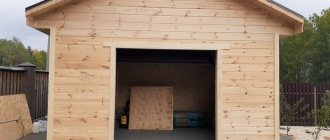Usually people buy furniture, paintings and other necessary and not so necessary interior items and furnishings, taking into account the configuration of their apartment. In most cases, this works, and the table falls into place without problems. The sofa fits perfectly between the corner and the door in a small room. The comfortable double bed is protected not only from prying eyes, but also from drafts. However, sometimes the realization suddenly comes that you will have to do some redevelopment and move the doorway. Otherwise, living in an apartment will be very inconvenient.
Of course, it is much easier to reconsider your views on the interior or purchase other furniture. But in some cases it will be more expensive, and it is prohibited to bring something new into your own apartment only if it is provided for by the housing code and is not a threat to the entire building.
Coordination of the relocation of the doorway
Doorway
If you decide to remodel your apartment, which in the vast majority of cases involves moving the doorway in the interior partition, you should start by studying the laws on this issue. This should be done first of all so that no BTI problems arise in the future.
An apartment building is a high-tech structure and any uncalculated changes in it can disrupt the strength of the floor slab and lead to very sad consequences. So, coordinating your changes with the relevant authorities will not only be useful, but also correct. This especially applies to situations where there is a need to move a doorway in a load-bearing wall. A simple resolution is not enough here. You will have to invite planning specialists, a commission from the BTI and prove to them that you really need such work. If you have a ready-made project on hand and have collected all the necessary documents, obtaining permission is not a problem.
However, we must remember well that for all this, starting with the project and ending with its approval, you will have to spend some money, in some cases quite a lot. Relocating a doorway in a non-load-bearing wall is much easier to coordinate. These works cannot cause a significant negative impact on the entire structure and are classified as harmless. Here you can only get by with a well-executed sketch or drawing, provided and approved by the same authorities. However, in this case, it should be taken into account that first making repairs and then simply presenting the housing inspection with a fact may not pass. And not because you come across an official who is too harmful. It’s just that in this case you will not act according to the law, and this may result in punishment.
Step-by-step instructions for making a jumper
In order for everything to really work out correctly, the jumper must be made with maximum compliance with the assigned tasks. The developed step-by-step instructions can help with this. You just need to be careful and not skip technological steps:
- First you need to prepare the channels of the required size. For example, if we are talking about an opening of 2.5 m, it is better to take a three-meter steel channel No. 18.
- Then you will need to make holes in the channels for the tightening bolts (the recommended fastener diameter is 20 mm, and the length should be such that it allows them to protrude 50 mm from each side of the wall.
- Next, on the load-bearing wall that goes under the opening, you will need to mark the opening itself, as well as indicate the placement of the steel lintel.
- Then you need to drill through holes to indicate the location of the opening and lintel on the other side of the wall too.
- Then you will need to remove the plaster from the designated areas.
- Using a jackhammer or manually, you need to prepare niches (they are also called grooves) on both sides of the wall - for the subsequent installation of channels. The depth of the gouging should be about 10 cm, and the height - about 18.
- Next you need to prepare (drill) holes for the coupling bolts according to the markings.
- The seats for the channels must be cleaned most thoroughly. And then moisturize.
- Next, cement mortar is applied (cement grade M100, at a minimum, and preferably more).
- And using the pressing method, the channels are “set” - each in its place.
- Next, you will need to insert the mounting bolts through the corresponding holes and tighten them.
- Then each channel must be filled with brick or cellular concrete.
Responsibility under the law
Law
Russian legislation has far-sightedly provided for the actions of some self-confident tenants who decided to ignore all of the above and move the doorway in the apartment on their own.
Administrative punishment for such actions will follow sooner or later. This can be a fairly significant fine, calculated in a tidy sum, which is beyond the means of the majority of the population of our country. Or an order to return everything to its original state, and at your own expense, which will also cause a significant loss to the family budget. It is worth noting that if the redevelopment was carried out by previous residents, and for some reason this was not discovered earlier, then those who currently live in the apartment will have to eliminate all changes that do not comply with the law. So when buying an apartment, you need to pay attention to this and obtain the necessary documents in order to avoid troubles later.
Is it possible not to legitimize?
Every owner who has carried out even minor redevelopment without permission is breaking the law. Improperly performed work can pose a threat to the lives of household members and neighbors and compromise the structural integrity of the building. Redevelopment without approval results in loss of the right to manage the property and payment of fines.
Such an apartment cannot be sold, donated or exchanged. Banks do not provide loans secured by an apartment that has been subject to illegal actions. Violations may even lead to the court putting the apartment up for auction.
Attention! Without approval, you can only make changes that do not change the configuration of the housing. This could be the replacement of external elements, parts of the facade and balcony materials, installation of air conditioning, or cosmetic repairs.
Getting ready for work
Tools for work
If all permits have been received, all documents and projects have been agreed upon, the neighbors have been informed that for some time the sounds of repair work will be heard from your apartment, which is not very pleasant for them, and the nearby garbage dump will be filled with construction waste, you can begin preparations.
Some people first go to the store and choose the door itself, which will definitely fit into the updated interior. If they are confident in their construction skills and can carry out the transfer of the doorway with an accuracy of a few millimeters, while maintaining the specified dimensions, then there is nothing wrong with that. But it's better to do the opposite. First make a new doorway, and only then buy a new door for it, otherwise a situation may arise when you have to carry out additional work to adjust the width or height.
And, of course, it is necessary to prepare the necessary materials and tools and carry out some safety precautions:
- Make sure that there are no electrical wires, sockets, or switches at the site of future work. Delete all of these, if any.
- Prepare the tool. You will need:
- “Bulgarian” with a set of corresponding disks.
- Hammer.
- Chisel.
- Screwdriver.
- Level.
- Pencil or marker.
- Roulette.
- Master OK.
- The set of materials that may be needed will depend on what the wall is made of, into which you are going to make a doorway, and on what you will use to seal the old one. For this purpose, foam blocks, drywall or bricks removed from the wall during work are usually used.
Tips and tricks
Before starting work, it is important to carefully listen to the recommendations of experienced finishers:
- You can start using a power tool only after checking the wall using a hidden wiring sensor.
- Work cannot begin without approval from the administration.
- If cracks appear on the walls or ceiling, stop work.
- Additional temporary reinforcement can be made from a jack, two wooden panels and a metal pipe. You need to secure the pipe to a jack, place one wooden shield under its base, and a second one at the end of the pipe.
- In a wooden or aerated concrete house, openings can be made either during construction or after its completion. In the second case, building materials will be used uneconomically.
If you need to make a passage of complex shape, then it is better to entrust the work to professionals.
Algorithm of actions
And now everything is ready. Sockets and switches, if they were, were removed, the wires were de-energized. The floor near the work site is covered. The doors to other rooms and the kitchen are tightly closed. We can begin.
- Using a tape measure, level and pencil, mark the new doorway on both sides of the wall.
- In some cases, a piece of wall that is planned to be removed must be supported on both sides to prevent it from collapsing.
- Using a grinder, carefully and slowly, we cut out the future doorway along the marked contour, starting from the top. Sawing is also done on both sides of the wall.
- We install the upper lintel, which will take on the weight of the wall remaining above the future door. The ends of the lintel should extend 8-10 cm into the wall on both sides of the doorway.
- We clean the new doorway that has formed and align the jambs.
- We insert the door frame. We level it using a plumb line, level and wedges and secure it with foam or cement mortar.
- We are hanging a new door.
- We close the old opening using one of the selected methods. Foam blocks, drywall or removed bricks.
- Let's clean up after ourselves. We take out the construction waste left after the work, wash the floor, and so on.
During the work, various nuances may arise, which will have to be eliminated as they arise. But if you adhere to the above algorithm, there should not be too many difficulties.
Finishing the appearance of the opening
After creating the opening, you need to make a beautiful finish. If a door frame is to be installed, it is necessary to prepare platbands and extensions.
If the owner has made an arched passage or does not want to install a door, the finishing must be done using plaster and putty. Step-by-step actions:
- Before finishing begins, the working surface is cleared of debris and dust.
- The areas where the plaster will be applied are coated with a primer.
- After the soil has dried, perforated corners are fixed to the corners of the opening, maintaining the level.
- The first layer of coarse plaster is applied.
- A reinforcing mesh is placed on the applied layer.
- A layer of fine-grained plaster is applied to the mesh.
- The prepared surface is cleaned before finishing work (decorative plaster, putty).
It is worth making every effort and carefully monitoring the application of each layer to ensure a decent result.
How to arrange a reorganization
It happens that the owner thought that the actions taken did not require approval, but he was mistaken. When selling a home, the changes will still have to be formalized, because there may not be anyone willing to buy the property “with a surprise.”
You can obtain permission from the housing inspectorate. If attempts are unsuccessful, you will have to go to court.
But if prohibited repair techniques were used, then the court’s decision will be negative.
Remodeling your home requires costs. It is necessary to pay for the services of the company to produce the project. If you go to court, the costs will increase. You will have to pay a state fee, a fine and bear the costs of a representative if you hire a lawyer. Therefore, before remodeling, you should clarify when changing the layout of an apartment does not require permission, and when it is definitely needed.
Removing a section of wall
Before starting work, you should carefully remove the plaster. It is possible that there may be wires there.
You should start removing bricks from the very top. You shouldn't try to do this from below. This won't end well. First you should get rid of the top row along the entire width of the future opening. Then a jumper is inserted, ensuring a normal delay for the future opening. The jumper is mainly used from steel. Wood does not guarantee that the structure will hold up well.
What changes will have to be abandoned?
What redevelopment is permitted is determined by law. Do's and don'ts must be followed by apartment owners. After all, a repair team can carry out almost any project for money. But whether such actions will be legal is another question.
3 prohibited techniques for changing the layout:
- placing a bathroom above the living rooms;
- connecting floor heating to general heating systems;
- connection between the room and the kitchen with a gas stove.
If the common property is annexed, then such actions are contrary to the law. Apartment owners have the same rights to the property of an apartment building.
Actions that threaten the integrity of the building and the normal operation of engineering structures are prohibited.
Bringing beauty
Cleaning up after yourself after finishing the work is not enough. An old doorway, even one that has been carefully and smoothly sealed, must be plastered, painted, or appropriate wallpaper applied to it. In most cases, the matter is not limited to this place alone, so it is best to plan the relocation of the doorway during the renovation of the entire room or even apartment. And here you can turn on your imagination to the fullest.
Relocating a door in an apartment is not the most common renovation procedure, since it is considered a redevelopment. Incorrect placement of the interior door interferes with the efficient use of space in the apartment. Therefore, there is only one way out - to move the doorway by installing a new frame with the door.
What to do if there is no floor plan?
Some points you should know:
- If the wall faces the street, then it is supporting;
- Walls near the landing;
- Walls that are shared with neighbors.
These rules are quite simple and understandable to everyone.
An important factor is also the floor on which the apartment is located. The higher the floor, the easier the work will be. Very often there are cases where it is prohibited to make such an opening in an apartment located on the ground floor. The type of house, layout and various other factors are taken into account. You should ask your neighbors above and below if they have had such work done. Indeed, in this case, it will be more difficult to do this in your apartment, since the openings are made one above the other, and not in a chaotic manner.
Important! Do not forget about the approval of such redevelopment. Otherwise, the owner of the apartment will be fined, and will also be asked to return everything to its original state.
People's lives depend on the quality of work performed. You should pay great attention to even small things that at first glance are unimportant. After all, if you do something wrong, the consequences can be irreversible.
Consequences of unauthorized reorganization
Some citizens improve at their own discretion and live this way for years, but sometimes it happens that the deception is revealed. For example, when selling a home. It happens that a shower stall is installed, and no one will know about it. But if the neighbors are suddenly flooded, then information about the reconstruction may well become known to government agencies.
Important! The violator will have to pay a fine of up to 2.5 thousand rubles. and try to legitimize their actions after the fact. If the attempts are unsuccessful, the housing will have to be returned to its original form.











